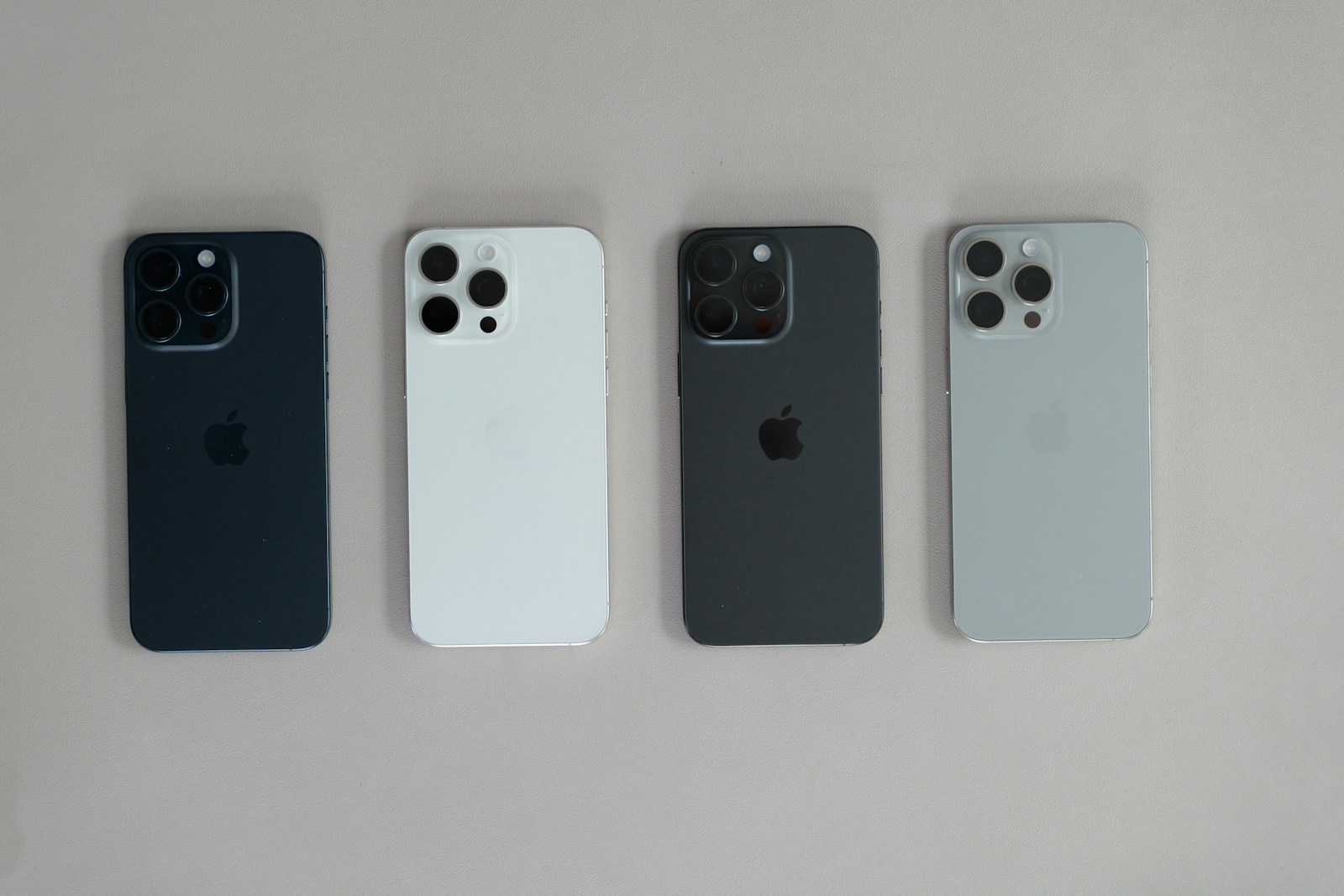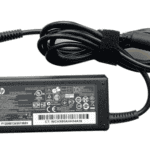With counterfeit iPhones becoming more convincing each year, especially in the second-hand market, it’s more important than ever to verify a device’s authenticity before buying. Whether you’re purchasing from a reseller, online marketplace, or even in person, here’s a definitive guide to spotting a fake iPhone—enhanced with the latest tools and Apple features.
1. Check the Serial Number and IMEI
Where to Find It:
- Go to Settings > General > About.
- Or dial
*#06#to reveal the IMEI instantly.
How to Verify:
- Head to Apple’s Check Coverage. Enter the serial number to confirm it’s recognized by Apple.
- Cross-check the IMEI on the SIM tray, back of the box, and in Settings. All should match. If they don’t, the phone may be tampered with.
Pro Tip: Scammers sometimes reuse serial numbers from real iPhones. To avoid being duped, verify that warranty and support details match the physical device’s condition.
2. Use Apple’s Parts and Service History (iOS 15.2+)
As of iOS 15.2 and continuing through iOS 18, Apple now offers visibility into a phone’s repair and parts history.
Steps:
- Open Settings > General > About.
- Look for a section labeled Parts and Service History.
What You Might See:
- Genuine Apple Part: Confirmed original hardware.
- Unknown Part: Could be a third-party replacement or a reused part.
- Used: Shown if the part was previously installed in another device (especially common in iPhone 15 or newer).
This is a powerful tool for spotting unauthorized repairs or internal counterfeiting.
3. Physical Inspection – Know the Telltale Signs
Even the most convincing clone often stumbles on design execution.
Check for:
- Weight & Finish: Real iPhones feel premium—solid glass and aluminum or titanium frames. Fakes may feel light, plasticky, or hollow.
- Apple Logo: On genuine iPhones, the logo is laser-etched and seamlessly embedded in the glass. Fakes often use stickers or have misaligned logos.
- Camera Layout: Compare the camera module size and placement with Apple’s official imagery. Inaccurate sensor sizes or spacing are dead giveaways.
- Buttons & Ports: Look at button tactility, Lightning port alignment, and speaker grill precision—fakes often get these wrong.
4. Confirm iOS Is Actually Installed
Fake iPhones commonly run Android skinned to look like iOS.
How to Spot It:
- Navigate to Settings > General > About—verify the iOS version.
- Try opening Siri, iCloud, or FaceTime. Fakes won’t support Apple-native services.
- Tap icons like App Store—if it leads to Google Play or crashes, the device is running Android.
Test: Connect to a Mac or PC—genuine iPhones are detected by Finder (macOS) or iTunes (Windows). Fakes usually aren’t recognized at all.
5. Understand the Model Number Prefix
In Settings > General > About, locate the model number (starts with a letter):
| Prefix | Meaning |
|---|---|
| M | Retail unit (new) |
| F | Apple-certified refurbished |
| N | Replacement unit |
| P | Personalized with engraving |
If your model number is missing or uses an odd prefix, that’s a red flag.
6. Check Activation Lock & Network Status
Activation Lock:
- Go to Settings > Apple ID. Make sure the device isn’t still linked to a previous owner.
- If it is, and you don’t have their credentials, the device is either stolen or unusable.
Network Lock:
- In Settings > General > About, scroll to Network Provider Lock.
- If it says No SIM restrictions, the phone is unlocked. Otherwise, it may be locked or region-specific—a potential sign of gray-market imports.
7. Test Apple Ecosystem Integration
- Quick Start Setup: Try setting up the phone using another Apple device. If the feature fails or isn’t offered, the device might be fake.
- AirDrop, iMessage, FaceTime: Try sending a message or file. Fake iPhones often can’t communicate within the Apple ecosystem.
- Find My iPhone: This should be available and configurable under Settings > Apple ID > Find My.
Bonus: Use Visual Tools
Tools like EXIF Viewer by Fluntro or camera metadata apps can also reveal inconsistencies in the camera system of fake phones.
You can also find detailed visual comparison videos on YouTube by searching “Fake iPhone vs Real iPhone 2025” for side-by-side breakdowns.
Smart Purchasing Tips
- Buy from Authorized Sellers: Apple, Best Buy, and certified resellers provide protection and guarantees.
- Avoid “Too Good To Be True” Deals: Suspiciously low prices on eBay, Craigslist, or Facebook Marketplace often mean counterfeits.
- Ask for Original Packaging: Check for matching IMEI/serial numbers on the box, SIM tray, and software.
By combining these technical checks with a healthy dose of skepticism, you can confidently spot a fake iPhone in 2025—before it ends up costing you.
How To Check iPhone IMEI Number
Ever wondered how to look up information using your iPhone’s unique identifier? Your iPhone has a special number called an IMEI (International Mobile Equipment Identity) that can tell you important details about your device. You can check your iPhone IMEI number on Google to verify if your device is legitimate, check its warranty status, or see if it’s been reported stolen.
Finding your IMEI number is easy. You can dial *#06# on your iPhone, or go to Settings > General > About and scroll down until you see it. Once you have this number, you can search it on Google to get valuable information about your device’s history and current status.
This process is helpful when buying a used iPhone or if your device has been lost or stolen. Carriers also use IMEI numbers to check if a phone is compatible with their network, making it an essential piece of information to know about your device.
Key Takeaways
- The IMEI number serves as a unique identifier for your iPhone that can reveal its history and status when searched on Google.
- You can find your iPhone’s IMEI by dialing *#06# or checking in Settings > General > About.
- Checking an IMEI is important when buying used iPhones, reporting theft, or verifying carrier compatibility.
Understanding IMEI
The IMEI (International Mobile Equipment Identity) number is a unique identifier for your mobile device. This crucial code helps track your phone and provides important information about it.
What Is an IMEI Number?
An IMEI number is a 15-digit code that acts like your phone’s fingerprint. Each mobile device has its own unique IMEI, which helps identify it on mobile networks worldwide.
This number contains information about your device’s manufacturer, model, and other specifications. On iPhones and other Apple devices, you can find this number in several places. The IMEI is typically printed on the device’s box, sometimes on the back of older models, or embedded in your phone’s settings.
The code follows a specific format that includes details about when and where your device was manufactured. Unlike a phone number that can be changed when switching SIM cards, your IMEI stays with your device forever.
Why Is the IMEI Number Important?
The IMEI number serves several critical purposes for smartphone owners. First, it helps track stolen or lost devices. If your iPhone goes missing, you can report the IMEI to your carrier or the police to block the device.
Mobile carriers use IMEI numbers to verify legitimate devices on their networks. This helps prevent stolen phones from being activated with new SIM cards.
The IMEI also helps with:
- Warranty verification
- Insurance claims
- Checking if a used phone is blacklisted
- Confirming if a phone is genuine or counterfeit
When buying a used iPhone, checking the IMEI first can protect you from purchasing a stolen or blacklisted device that won’t work properly on cellular networks.
Differences Between iPhone and Android IMEI
While both iPhone and Android devices have IMEI numbers, there are some differences in how they’re handled and accessed.
iPhones typically have the IMEI printed on the SIM tray (on newer models) and can be found by dialing *#06# or going to Settings > General > About. Apple devices also store the number in iTunes when connected to a computer.
Android phones also use *#06# or can show the IMEI in Settings > About Phone, but the exact menu path varies by manufacturer. Some Android devices with removable batteries have the IMEI printed under the battery.
Another difference is that dual-SIM iPhones have two IMEI numbers—one for each SIM slot. Many Android phones also have dual IMEI numbers for dual SIM functionality, but some older models might handle this differently.
iPhone IMEI numbers can also be verified through Apple’s official channels, while Android verification depends on the specific manufacturer.
Locating the IMEI Number on Your iPhone
Every iPhone has a unique 15-digit IMEI (International Mobile Equipment Identity) number that helps identify your specific device. You can find this important number in several ways depending on what’s most convenient for you.
Using the Keypad
The quickest way to find your iPhone’s IMEI number is through the phone keypad. Open your Phone app and tap on the keypad tab. Type *#06# just like you would dial a phone number. Your IMEI number will automatically appear on the screen without having to press the call button.
This method works even if your iPhone isn’t activated or connected to a network. The IMEI will display as a pop-up on your screen.
You can easily copy this number by pressing and holding on it. This is helpful when you need to share the IMEI with your carrier or for registration purposes.
Through iPhone Settings
The Settings app provides a reliable way to locate your IMEI number. Start by opening the Settings app on your iPhone. Tap on “General” and then select “About.”
Scroll down through this information page until you find the IMEI listing. Newer iPhone models with dual SIM capability will show both IMEI1 and IMEI2 numbers.
To copy the number, simply tap and hold on it. Your iPhone will give you the option to copy it to your clipboard. This method is useful when you need your IMEI for warranty claims or when contacting customer support.
Via iTunes
If you prefer using a computer, iTunes can help you find your iPhone’s IMEI. Connect your iPhone to your computer using a USB cable and open iTunes (or Finder on newer macOS versions).
When your device appears in iTunes, click on the iPhone icon near the top of the window. A summary page will open showing basic information about your device.
Click on the phone number field, and it will cycle through several pieces of information including your IMEI number. This method is particularly useful if your iPhone screen is damaged and you can’t access the settings.
On the Device Packaging
If you still have your original iPhone box, you can find the IMEI printed on the label. Look for a small white label on the back or side of the box that lists various product information.
The IMEI should be clearly marked and labeled. This can be helpful if your device won’t power on or if you need to verify the IMEI before setting up your iPhone.
For some iPhone models, the IMEI may also be printed on the SIM tray or etched on the back of the device. However, newer models have removed this physical marking, making the packaging an important backup source for this information.
Using Google to Check iPhone IMEI
Google provides several ways to verify your iPhone’s IMEI number. These methods can help you confirm if your device is legitimate or check its status before purchasing a used iPhone.
IMEI Check Services
When using Google to check an iPhone IMEI, you can search for specialized IMEI verification websites. Type “iPhone IMEI check” in Google’s search bar to find reliable services. Popular options include IMEI.info and IMEI Pro, which offer basic device information for free.
These services typically show:
- Device model and storage capacity
- Manufacturing date
- Activation status
- Regional origin
Some services also check if the iPhone is blacklisted, stolen, or under financial contract. To use these services, you’ll need to enter your IMEI number, which you can find by dialing *#06# on your iPhone or going to Settings > General > About.
Comparison of Online IMEI Checkers
Not all IMEI checkers offer the same features or accuracy levels. Here’s how some popular options compare:
| Service | Free Features | Premium Features | Reliability |
|---|---|---|---|
| IMEI.info | Basic device info, blacklist status | Carrier check, warranty status | High |
| IMEI Pro | Model verification, activation check | Full history report, iCloud status | Medium-High |
| SNDeepInfo | Basic specs verification | Detailed purchase history | Medium |
Free services typically provide basic information like model verification and blacklist status. Premium services offer more detailed reports including repair history and iCloud activation lock status.
Some services have apps available on Google Play for Android users, but iPhone users typically need to use web-based checkers. Always use reputable services to protect your IMEI from being misused.
When to Check Your iPhone’s IMEI Number
Knowing when to check your iPhone’s IMEI number can save you from fraud and help recover your device in emergency situations. The IMEI acts as a unique identifier that proves ownership and reveals important device history.
Before Buying a Used iPhone
When shopping for a used iPhone, always check the IMEI number before paying. Ask the seller for the IMEI and verify it online through Apple’s official website or carrier checker tools. This simple step helps you:
- Confirm the phone isn’t stolen or reported missing
- Verify the model matches what’s being advertised
- Check if the device is carrier-locked or unlocked
- Ensure the phone isn’t blacklisted by carriers
Some sellers may try to hide problems with a device. Red flags include refusing to share the IMEI or providing screenshots that look edited. Trust your instincts and walk away from deals that seem suspicious.
If Your iPhone Is Lost or Stolen
If your iPhone goes missing, the IMEI number becomes crucial for recovery. Having this information readily available will:
- Allow you to report the exact device to police with proper identification
- Help carriers add your phone to blacklists so others can’t activate it
- Support insurance claims by proving which specific device was yours
Smart iPhone owners keep their IMEI number written down in a safe place separate from their phone. You can also find your IMEI in your original purchase receipt, iTunes backup information, or your iCloud account.
Law enforcement can sometimes track phones using IMEI numbers, but you’ll need to provide this information quickly when filing a report.
Carrier-Related IMEI Checks
Your iPhone’s IMEI number can tell you important information about your device’s status with mobile carriers. This unique identifier helps determine if your phone is blacklisted or has carrier restrictions that might affect its use.
Checking Blacklist Status with Carriers
When a phone is reported lost or stolen, carriers often add its IMEI to a blacklist. This makes it impossible to use the device on their networks. To check if an iPhone is blacklisted:
- Visit your carrier’s website and look for their IMEI checker tool
- Enter the 15-digit IMEI number you found by dialing *#06#
- Review the status report provided by the carrier
Many carriers offer free basic checks. Some third-party services provide more detailed reports for a small fee. These reports show if the phone has been reported stolen or has unpaid bills attached to it.
For accurate results, check directly with the carrier you plan to use. Each carrier maintains its own blacklist database, though many share information through industry databases.
Understanding Carrier Restrictions
Carrier restrictions limit which networks your iPhone can connect to. These restrictions fall into two main categories:
Carrier locks – When you buy a phone through a carrier with a contract, it’s often “locked” to that specific network. This means you can’t use SIM cards from other carriers until the phone is unlocked.
Network compatibility – Some iPhones are designed to work with specific network types. For example, certain models may not support all the frequency bands used by every carrier.
To check carrier restrictions, enter your IMEI number on the carrier’s website or contact customer service. Many carriers provide unlock codes after contract completion or for a fee.
Before buying a used iPhone, verify it isn’t locked to a specific carrier by checking its IMEI. This prevents surprises when trying to activate it on your preferred network.
Reporting and Protecting Your iPhone IMEI
Your iPhone’s IMEI number is a valuable identifier that can help recover your device if it’s lost or stolen. Knowing how to properly report and safeguard this information is essential for all iPhone owners.
How to Report a Lost or Stolen iPhone
If your iPhone goes missing, act quickly to report it using your IMEI number. First, activate “Find My iPhone” through iCloud.com or the Find My app on another Apple device. This lets you track your phone’s location, play a sound, or remotely erase data.
Contact your mobile carrier immediately. Provide them with your IMEI number so they can:
- Block service to your device
- Add your phone to the blacklist database
- Prevent unauthorized use of your phone
File a police report with your local authorities. Include the IMEI number, which serves as a unique identifier for your specific device. Many insurance companies require this step before processing claims.
Check the blacklist status of your device periodically through various online IMEI checkers to confirm it’s properly reported.
Protecting Your IMEI Information
Keep your IMEI number in a secure place separate from your iPhone. Write it down in a notebook or store it in a password-protected document.
Safe storage options include:
- Saving it in a password manager
- Taking a photo of the number and storing it in a secure cloud account
- Recording it in an emergency contact list
Be cautious about sharing your IMEI number online or with strangers. Scammers can use this information to clone phones or commit fraud.
Consider taking a screenshot of your IMEI from Settings > General > About and storing it securely. This provides quick access if needed without keeping it physically with your device.
Regularly check if your iPhone is still registered to your Apple ID through the Apple Support website for added security.
Frequently Asked Questions
Here are answers to common questions about iPhone IMEI numbers, including verification methods and ways to find this important identifier with or without having your device on hand.
How can one verify the authenticity of an iPhone’s IMEI number?
To verify if an iPhone IMEI number is authentic, use Apple’s official support page or contact Apple Support directly. The IMEI can be checked against Apple’s database to confirm the device’s origin.
Another option is using third-party IMEI checker websites that connect to manufacturer databases. These sites often show details like production date and warranty status.
Always be careful when using non-Apple verification services. Stick to reputable sites to protect your information and get accurate results.
What are the steps to locate the IMEI number on an iPhone using Google Chrome?
Open Google Chrome on your iPhone and type *#06# in the search bar. The IMEI number will not display this way as it’s a device code, not a browser function.
Instead, go to Settings > General > About on your iPhone. Scroll down to find the IMEI number listed there. You can copy this information by tapping and holding on the number.
If you need to check from a computer, log into iCloud.com in Chrome and go to Find My iPhone. Select your device from the list to view its details.
How to determine the iPhone model by checking the IMEI number?
Visit an IMEI checker website like IMEI.info or SNDeepInfo and enter your iPhone’s IMEI number. The results will display the exact model of your iPhone.
Apple’s support site can also help identify the model based on the IMEI. This information includes the device generation, storage capacity, and color.
The first few digits of an IMEI can sometimes indicate the model, but using a dedicated checking service is more reliable and provides complete information.
What methods are available for checking an iPhone’s IMEI number online?
Apple’s official website offers a service to check device coverage status using the IMEI number. This shows if your iPhone is still under warranty or eligible for service.
Carrier websites often have IMEI checkers to verify if a device can be activated on their network. This is helpful when buying a used iPhone.
Third-party services like IMEI24.com or CheckMEND provide detailed reports about the device, including whether it has been reported lost or stolen.
How can you find your iPhone’s IMEI number if you do not have physical access to the device?
Check your original iPhone packaging box, which has the IMEI printed on the label. The original receipt or purchase documentation often includes this information too.
If you’ve backed up your iPhone to iTunes, open iTunes preferences, select Devices, and hover over the backup name to see the IMEI number in a popup.
Log into your iCloud account online, go to Find My iPhone, and select your device. Some account details may show the IMEI of registered devices.
What are the procedures to confirm that an Apple serial number is legitimate?
Go to Apple’s Check Coverage page on their website and enter the serial number. A legitimate serial number will show valid service and support options.
Check if the format matches Apple’s standard pattern for serial numbers. Apple serial numbers follow specific formats based on the manufacturing date and location.
Physical inspection can help too. Compare the serial number on the device with the one on the packaging and in the Settings app. They should all match exactly.







